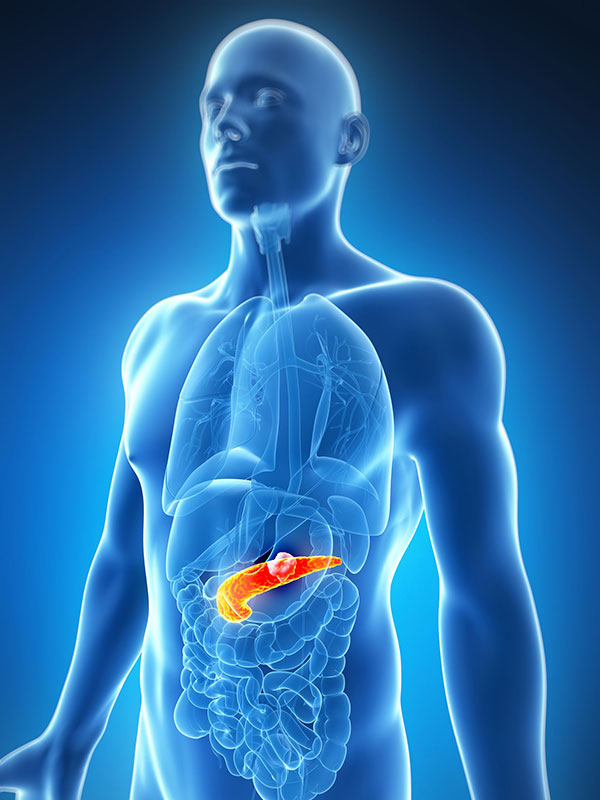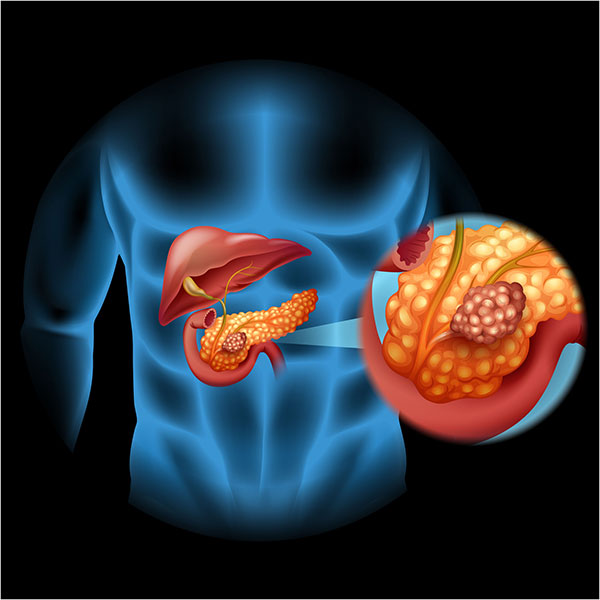Pancreatic cancer is one of the most aggressive cancers and in recent decades there has been an increase in its frequency. It is more common in men than women and is observed mainly in elderly patients over 60 years old. It is the fourth leading cause of death from cancer.
The exact etiology is not entirely known. Smoking and consumption of various foods such as animal fat, animal protein and grilled meat are to blame. There are also a number of hereditary diseases that are associated with pancreatic cancer and make up 10% of cases. Such diseases that predispose to the development of pancreatic cancer are hereditary pancreatitis, cystic fibrosis, familial breast cancer and familial pancreatic cancer.
Pancreatic adenocarcinoma is the most common form of pancreatic cancer and accounts for 85% of cases. Rare forms are cystadenocarcinoma and tumors of the endocrine part of the pancreas. In 2/3 of the cases it is located in the head of the pancreas and the rest concerns the body and the tail of the organ.
Pancreatic cancer metastasizes hematogenously mainly to the liver and lungs and more rarely to other organs (bones, adrenal glands), endogenously to the peripheral lymph nodes and then to tissues in the peritoneum and adjacent organs.
In most cases the diagnosis of pancreatic cancer is delayed and this is because the symptoms are often atypical and progress slowly. Pancreatic head cancer usually presents with weight loss, obstructive jaundice, deep epigastric pain and vomiting. Cancer of the body and tail of the pancreas usually gives delayed symptoms, mainly epigastric and loin pain, weight loss and very rarely jaundice. For these reasons at the time of diagnosis it is often inoperable.
In pancreatic cancer in the blood serum is usually detected elevated cancer index CA 19-9. There are many imaging methods for its diagnosis: sonarography, CT (computed tomography) and spiral CT, CT angiography, MRI (magnetic resonance imaging), MRCP, ERCP (endoscopic retrograde cholangiopancreatography), PET (positron emission tomography), endoscopic ultasound, guided with computed tomography or endoscopic ultrasound biopsy (FNA). The above tests help not only the diagnosis but also to decide whether the tumor is resectable (vascular infiltration, metastases to the liver and lungs). Diagnostic laparoscopy is often used for this purpose.
In cases where the cancer is resectable, the treatment of choice is the surgical treatment (pancreatoduodenectomy-Whipple) which has very good results. Complementary chemotherapy is often required.
 English
English  Ελληνικά
Ελληνικά 

